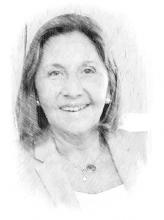You are here
A day full of books
Apr 24,2021 - Last updated at Apr 24,2021
April 23 is a key date for world literature, since it was on that day — back in 1616 that three of its most distinguished figures passed away: Miguel de Cervantes, the greatest writer in Spanish language, William Shakespeare, the most outstanding writer in English language and the Inca Garcilaso de la Vega, the first universal writer from the American continent. It is undoubtedly a historical coincidence full of symbolism.
As the ambassador of Spain I would like to take this opportunity to pay tribute to the figures of Miguel de Cervantes and Inca Garcilaso, and with them, to the language that both contributed to magnify and that is spoken today by more than 500 million people around the world.
The life of Miguel de Cervantes Saavedra could be considered itself as a novel. Soldier, tax collector, novelist, poet and playwright, Cervantes travelled throughout Spain and Italy, where he arrived fleeing from justice after having taken part in a duel. He fought against the Turkish army at the Battle of Lepanto, which he would later describe as “the greatest event ever seen in past or present times, or that future times can ever hope to see”. In this battle he was wounded and he lost the mobility of his left hand. Ever since he was known as “the One-armed Man of Lepanto”. When returning from Italy to Spain, his boat was attacked by Turkish pirates who took him as a prisoner to Algiers and demanded a ransom for his release. Cervantes tried to flee from his captors on four occasions without success and was finally released, almost five years later, after paying ransom. His stay in Algiers was a turning point in his life that is reflected in some of his works. Upon returning to Spain, he combined his literary activity with his job as tax collector. It was at this stage of his life when he wrote all the works that made him immortal.
Undoubtedly “The ingenious hidalgo Don Quixote de la Mancha” stands out above all of his works. It is a masterpiece of Spanish literature and it is fairly considered the first modern novel. But more than a novel, Cervantes contributed to creating a myth, a figure that transcends literature and becomes a universal reference. The success came shortly after it was published and it led to its translation into the main European languages. Nowadays it is the second most translated literary work, only after the Bible. Such was the fame of the novel that another writer wanted to take advantage of it by writing a second part, in what we would today consider as a flagrant violation of intellectual property. Cervantes responded by publishing the genuine second part in which he denounces this forgery through the character of Don Quixote.
As a curiosity for the Arab reader, I would like to mention that, in a literary game, Cervantes attributes the authorship of the novel to a supposed Muslim historian whom he calls Cide Hamete Benengeli, which shows the Arab influence on the Spanish literature of the Middle Ages and the Renaissance.
Another example of this influence is the figure of Sancho Panza, Don Quixote’s faithful squire, whose mixture of foolishness and wisdom could be to some extent inspired by the character of Yuha, so popular in Arabic literature.
As for the Inca Garcilaso de la Vega, he is probably one of the most outstanding examples of the racial and cultural blending that occurred in Spanish America. This writer and historian born in Cuzco, in present-day Peru, was the son of a Spanish soldier and an Inca princess, a descendant of one of the last rulers of the Inca Empire. He lived between Peru and Spain, where he had the opportunity to meet Cervantes, and like him, he combined his literary work with a military career. His masterpiece is the “Royal Commentaries of the Incas”, in which he explains the history and traditions of pre-Columbian Peru, which was followed by “General History of Peru”, in which he narrates the Spanish conquest of this empire. Just as in the first work he praised his indigenous ancestry, in the second he did so with his Hispanic heritage, since both of them build up jointly the identity of this great writer.
If multiculturalism is one of the defining features of the Inca Garcilaso, it also defines the Spanish language itself, which, being a derivative of Latin, it has managed to accommodate more than four thousand words of Arabic origin, more than half of them are still used today like “almohada” (pillow), “albornoz” (bathrobe) or “azahar” (orange blossom).
Therefore, it is not surprising that UNESCO has declared April 23 as International Book Day and for the United Nations it is the day of Spanish and English languages, thus paying tribute to these figures that represent the two most important languages spoken internationally.
The writer is Spain’s ambassador to Jordan













